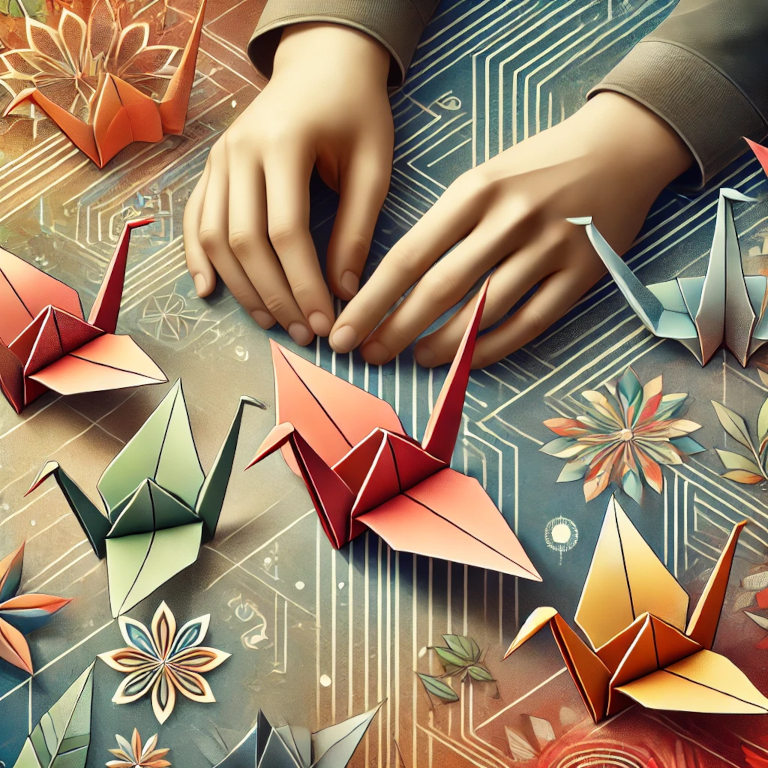Origami, the ancient art of paper folding, transforms simple sheets of paper into intricate and beautiful shapes. This craft has captivated enthusiasts worldwide, blending creativity, patience, and precision. As an expert in DIY and Crafts, this article delves into the world of origami and paper folding, exploring its history, techniques, and benefits, and providing tips for getting started.
Understanding Origami
Origami, derived from the Japanese words “ori” (folding) and “kami” (paper), is the traditional Japanese art of paper folding. This art form dates back to the 17th century and has evolved over the centuries, becoming a beloved hobby and a respected art form globally.
The History of Origami
Origami has a rich history rooted in cultural traditions and ceremonies. Initially, it was used in religious and ceremonial contexts, such as creating offerings and decorations. Over time, it became a popular recreational activity, and its techniques were refined and documented. Today, origami is both an art and a science, with applications in education, engineering, and design.
Benefits of Origami
1. Enhances Fine Motor Skills
Origami requires precise folding and manipulation of paper, which helps improve fine motor skills and hand-eye coordination. It is particularly beneficial for children and adults recovering from injuries.
2. Promotes Relaxation and Mindfulness
The repetitive and focused nature of paper folding can be meditative, reducing stress and promoting mindfulness. Engaging in origami can provide a sense of calm and improve mental well-being.
3. Stimulates Creativity and Problem-Solving
Creating intricate designs from a simple piece of paper encourages creative thinking and problem-solving. Origami challenges the mind to visualize shapes and sequences, enhancing spatial awareness.
4. Educational Applications
Origami is used in educational settings to teach geometry, fractions, and other mathematical concepts. It also helps develop patience, attention to detail, and perseverance.
Essential Origami Techniques
1. Basic Folds
- Valley Fold: Fold the paper in half, creating a valley-like crease.
- Mountain Fold: Fold the paper in half, creating a mountain-like crease.
- Squash Fold: Flatten a folded flap by opening it and pressing it down.
2. Common Bases
- Square Base: Also known as the preliminary base, it forms the foundation for many traditional models.
- Bird Base: A more complex base used to create cranes and other intricate figures.
- Waterbomb Base: Used for making waterbombs and other 3D models.
3. Advanced Techniques
- Reverse Fold: A fold used to change the direction of a flap by folding it inside out.
- Petal Fold: A technique used to form petals and other rounded shapes.
- Sink Fold: An advanced fold that involves pushing a point or edge into the model, creating a recessed area.
Getting Started with Origami
1. Gather Materials
To start with origami, you’ll need:
- Origami Paper: Thin, square paper specifically designed for origami. It comes in various sizes and colors.
- Bone Folder: A tool used to create sharp creases and folds.
- Cutting Tools: Scissors or a craft knife for cutting paper to the desired size.
- Tweezers: Useful for making precise folds in small or intricate models.
2. Choose Simple Models
Begin with simple models to build your confidence and skills. Some easy starting points include:
- Paper Crane: The iconic origami crane symbolizes peace and is a great introduction to basic folds and techniques.
- Paper Boat: A straightforward model that introduces fundamental folds.
- Paper Frog: A fun and simple model that can hop when completed.
3. Follow Instructions
Origami instructions can be found in books, online tutorials, and instructional videos. Look for diagrams that use standard origami symbols and follow each step carefully.
- Tips: Practice patience and precision. Take your time with each fold to ensure accuracy.
Advanced Origami Projects
As you gain experience, challenge yourself with more complex models. These projects require advanced techniques and greater precision:
- Modular Origami: Involves creating multiple units that are assembled to form a larger, more complex structure.
- Tessellations: Repeating geometric patterns created by folding a single sheet of paper.
- Wet-Folding: A technique that uses slightly dampened paper to create curves and more sculptural shapes.
Incorporating Origami into Daily Life
Origami can be more than just a hobby. Here are some ways to incorporate it into your daily life:
- Decorations: Create paper decorations for events, parties, or home decor.
- Gifts: Personalize gifts with handmade origami cards, ornaments, or gift toppers.
- Educational Tools: Use origami to teach mathematical concepts, storytelling, or cultural lessons.
- Stress Relief: Incorporate origami into your daily routine as a form of relaxation and mindfulness.
Summary
Origami and paper folding offer a unique blend of creativity, mindfulness, and education. By understanding the basic techniques, gathering the right materials, and starting with simple models, you can embark on a rewarding journey into this ancient art form. Whether you’re looking to enhance your fine motor skills, find a new form of relaxation, or explore your creative potential, origami provides endless possibilities for personal growth and enjoyment.






